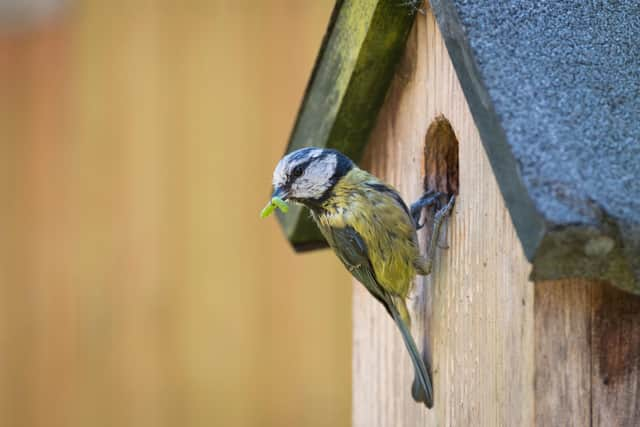RSPB COLUMN:Love is in the air and your garden this February


A big thank you to everyone who took part this year– whether you had birds flocking to your feeders or a zero result, it’s all valuable data for the RSPB, so don’t forget to submit your results online by February 20.
Although we’re still in winter, tentative new shoots are beginning to peep through the soil and the promise of spring hangs in the air. Our garden birds will soon begin pairing up for nesting season, in fact some early birds such as woodpigeons could already be nesting nearby.
Advertisement
Hide AdAdvertisement
Hide AdWe can show our garden birds some love by putting up some nestboxes this month. Our modern gardens and parks are often tidier than they used to be, meaning that it’s harder for birds to find natural holes to make a home.
Putting up nest boxes is not only great for birds, but can also provide hours of joy as it brings in new wildlife spotting opportunities right on your doorstep.
The birds you attract will depend on the type of nestbox, the location and the size of the entrance hole. Tits prefer boxes with smaller entrance holes, which are fixed 2 – 4 meters high on a tree or wall.
House sparrows and starlings will use nestboxes placed under the eaves. Whereas robins, use open-fronted nestboxes, but these need to be well covered by vegetation as they don’t like to give away their nest sites in case of a lurking predator. As a general rule, unless there are trees or buildings which shade the box during the day, face the box between north and east, to avoid strong sunlight and the wettest winds.
Advertisement
Hide AdAdvertisement
Hide AdFebruary is also the ideal time to plant some extra habitat such as native trees and shrubs.
Choose the right ones and they will offer food, nesting sites and shelter for wildlife for years to come. Trees aren’t difficult to grow and some dwarf varieties will grow quite happily in pots if you don’t have a lot of space.
For more seasonal wildlife tips, latest know-how and garden wildlife inspiration visit the RSPB’s website. You could also consider joining as an RSPB member.
Members receive free entry to nature reserves, a fantastic quarterly wildlife magazine and you’ll be helping to protect the wildlife and wild places you love – rspb.org.uk.
Comment Guidelines
National World encourages reader discussion on our stories. User feedback, insights and back-and-forth exchanges add a rich layer of context to reporting. Please review our Community Guidelines before commenting.